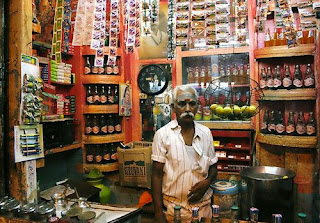The Varna
In classic Hinduism, Varna is the arrangement of classes in society. This class is reflective of the stage of life that a being's Atman is in. Brahmin people, the highest of the social classes, are said to be the ones who have lived past lives in the most holy of ways. To follow the Varna is considered to be the highest level of correct duty, or Dharma, towards the Gods. The four castes, or classes, in order from highest to lowest place, that a person can be born into are Brahmins, Kshatriya, Vaishyas, or Shudras. The Brahmins are the most priestly and intellectual people, who perform the Hindi religious ceremonies. The Kshatriya are still fairly high up in class and are often the noble people with power over society. The Vaishyas are the commoners, or the equivalent to the middle class of western society. This class farms, trades and earns money as merchants. The lowest class is the Shudras, artisans, musicians and workers, who are all people that labor and serve for the upper classes. Over the years the caste system has received an extreme amount of criticism over human rights and other equality issues. The caste system has been in place for such a long and was originally followed and interpreted by the Brahmins.
 |
| Illustration of a couple in the Kshatriya caste. |
 |
| Illustration from 1876 of a Hindi Brahmin. |
 |
| Modern day shopkeeper of the Vaishya caste. |
 |
| Man of the Shudra caste. |
No comments:
Post a Comment